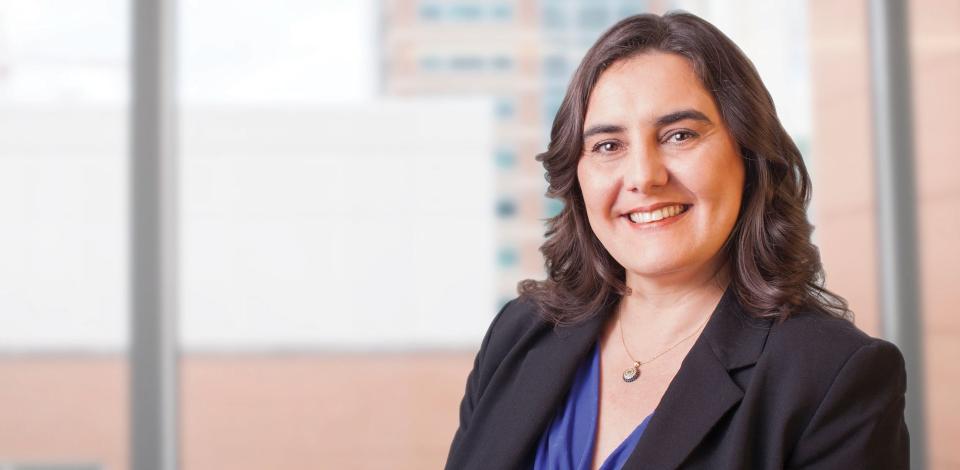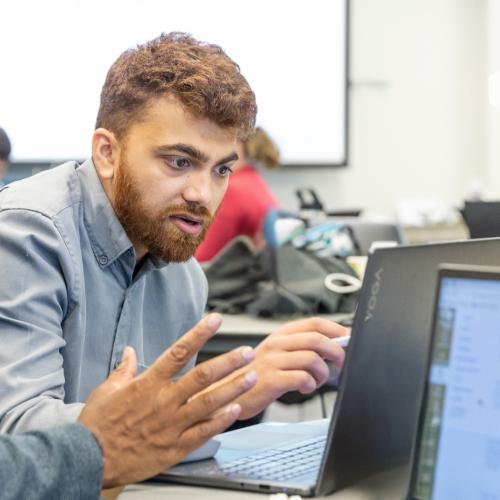The Landscape of Higher Education in the Era of COVID-19
As online education takes center stage, its benefits will be felt in the traditional classroom, too

Unprecedented. Disrupted. Challenging. These are a few of the words that have been used – and overused – to describe the landscape of higher education in the era of COVID-19. I would like to add one more word to the mix: revolutionized.
If you detect a tone of optimism in that word, it is intentional. After nearly three decades of work in instructional design and remote education, I believe that this pandemic will ultimately have a positive, revolutionizing impact on online higher education – and higher education as a whole. That optimism is rooted in a firm conviction that online learning is the most student-centric approach to education. There will be good and bad examples of remote delivery implementations along the way, but once we have come through this pandemic, both faculty and students will experience a shift in mindset that leads to better educational outcomes.
Lasting Impacts
Before describing the long-term positive shifts that will occur, it is important to make a distinction between the events of the spring 2020 semester and true online education. What we have all just experienced was an emergency pivot to remote delivery with a focus on continuity of instruction through technology. As we move into summer and fall instruction, we can approach online teaching from a more solid pedagogical perspective that is grounded in learning outcomes, critical course components, and technologies. In other words, we can move toward a true version of online learning.
While the introduction of faculty to online learning has been a trial by fire over the last few months, most of them will emerge from the experience more adept at using technology and more confident about what they can accomplish without being in a classroom. They will also have an increased appreciation for what physical presence brings – and does not bring – to learning, which should prompt them to focus classroom time on active learner engagement in higher levels of cognitive activity rather than defaulting to content delivery, which typically engages students in lower levels of cognitive activity. In the long run, this focus on active learning and the resulting increased learning gains could lead to an increase in the number of faculty members who want to continue using online methods, at least to teach hybrid or blended courses (also known as flipped or blended learning).
The embrace of online delivery by many faculty and students will bring it to the center of higher education. For decades, online education has lingered at the edges, meeting niche needs but having limited impact on the larger higher education landscape until very recently, with the advent of at-scale learning programs for both credit-seeking and professional development programs as a result of MOOCs. The coronavirus has expanded online education’s marginal role, using it in service of existing residential instructional practices. The next phase of transformation will give online education a much larger role to play, and in the process will have lasting effects on instructional approaches.
It may seem counter-intuitive, but a greater embrace of online education is also an opportunity to rethink the time spent in the classroom. The reason is simple: Designing an effective online environment begins with identifying the skills, capabilities and competencies that students should achieve through the course, an exercise that often doesn’t get applied to in-class lectures. Conventional approaches to course design often begin by identifying content and determining how it will be delivered. In a student-centric approach, which is what online education facilitates, every decision about the course is made around enabling student success and addressing important questions such as: How can faculty know if students are progressing? What do students need to progress? How can we make it available to them? What are the technologies that help? The course revolves around student outcomes. We have been evangelizing this on our campuses, but it only came to the forefront of many fellow faculty members’ minds when COVID-19 forced them to think about what is most important and how they will finish up the semester.
For many years instructional designers and learning scientists have advocated the importance of flipped and inverted learning where content delivery and lower-level cognitive learning is pushed online while the classroom is used to engage in discussion and analysis. While this is not a novel concept, just like the year of the MOOC in 2012 invigorated and propelled the field of online learning that was in existence for almost 20 years at that point, COVID-19 is likely to be the precipitating event that finally makes inverted learning a reality.
Preparing for the Future
Colleges and universities can prepare for this exciting new future by encouraging a cultural and policy shift that supports increased use of pedagogically sound online delivery. Currently, accrediting bodies and federal regulations tightly control online instruction. In addition, institutions implement further restrictions on online delivery, especially at the undergraduate level. That needs to change as higher education navigates the long-term effects of coronavirus, and administrators and policy makers would be wise to press for flexibility in the use of online instruction.
In the near term, colleges and universities should provide guidance for faculty on the best uses of online instruction without overburdening them with information. “How to teach online” guides are ubiquitous and overwhelming, even for long-time online educators. At Georgia Tech, we are offering highly customized and streamlined online trainings for our faculty, supported by one-on-one consultations. In these sessions, faculty can discuss the unique requirements of their courses with experienced online course designers who can help address their specific areas of need. This allows faculty to devote their time to actually building courses instead of going through training that may not be applicable to their situation.
By helping faculty align course objectives, assessments, communications and content delivery in an online environment, colleges and universities can improve outcomes in the near term while also positioning themselves for effective uses of online instruction in the long term.
Public and private colleges and universities are experiencing significant budget cuts as their financial models have been turned upside down. Even in the midst of budget cuts, however, important investments will have to be made in preparing institutions for the future.
How can universities ensure that limited funds are put to maximum use? Begin with the end in mind. Focus on learning goals, not on replicating the classroom experience via technology. The latter approach often results in an ever-multiplying array of technologies that do not necessarily deliver better student outcomes. Upholding learning goals is both good pedagogy and good stewardship, directing resources toward the technology and people who will help write the next, online-centric chapter in higher education.
Yakut Gazi, Ph.D., is the Associate Dean for Learning Systems at Georgia Tech Professional Education (GTPE), overseeing learning design and development, technology infrastructure, compliance, and assessment for Georgia Tech's online and distance courses.
This byline was originally featured in the Academic Leader.

